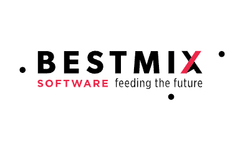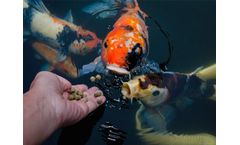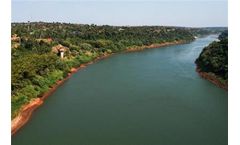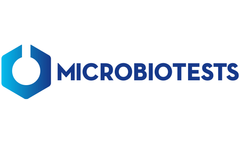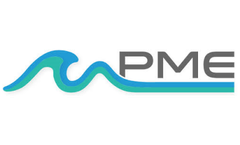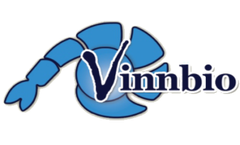Refine by
Crustaceans Articles & Analysis
28 articles found
Acetobacter Xylinum, Activated Carbon Alum pulvis Bacillus Subtilis Benzoic acid Black pepper Dhaniya Crude Pulvis Citric acid Chitin isolated from crustacean shells Clove oil Dextrose Eclipta alba Garlic powder Honey Tulsi crude pulvis L acidophilus Lactobacillus casei L.delbrueckii subsp. ...
They serve an important function in the recycling of chitin, the structural component of crustacean exoskeletons, among other things. Some are human pathogens (Vibrio parahaemolyticus, Vibrio cholerae) and others are aquatic animal pathogens (Vibrio parahaemolyticus, Vibrio anguillarum, etc.). ...
In 2022, the company produced and supplied more than 3 million tons of high-quality feed for more than 60 species of fish and crustaceans. For Skretting, R&D is crucial to meeting global nutritional needs, both today and in the ...
ByBESTMIX
Today many hundreds of fish species and a dozen or so species of crustaceans are being farmed with many more in various stages of R&D. ...
Fishmeal processing machinery mainly uses fish with low economic value, fish production and processing waste or some crustaceans and cephalopods as raw materials to produce and process into fishmeal machinery and equipment. ...
Its calcium/phosphorus ratio is near to 1,5:1 which favors the absorption of both minerals, and it is significantly lower compared to fish or crustacean meals (3 or ...
The high salt content of the environment represents a strong physiological challenge for fish and crustacean. They need to keep their hemodinamic and a proper physiological status. ...
Chitin is component of several crustacean and insect carapace. It is an energy source for several species which can degrade chitin through special enzymes. ...
Both fish and crustaceans live in an immersed aquatic environment, where their chemioperceptive system receives permanent stimulation by soluble compounds. ...
The pellets have enough density to allow them to sink into the water, which is necessary for crustaceans or bottom-feeding fish, or they have a reduced density to allow them to float on the surface of the water. ...
Sinking food, extremely water resistant, for shrimps and other crustaceans In growth phase fish can need pellet up to 12 different sizes, from 0.05 mm to 12 mm. ...
But the wild species, in addition to hunting fish, in about 10 cm of their juvenile stage, they will also prey on shrimp, water fleas, midges, and other crustaceans and aquatic insects for food. They also catch small fish swimming 3 to 4 centimeters above the water. ...
Abstract :The review first addresses the major bottleneck of conventional toxicity tests with invertebrates, namely the need for continuous culturing and/or maintenance of stocks of live test-organisms. Subsequently the history of the development and the validation of the first cyst-based microbiotests are outlined. Details are given of the large intercalibration exercises organized concurrently ...
Initial surveys from the Gulf of Alaska indicate decreased numbers of pollock and cod, both of which are important commercial fisheries. Crustaceans and mollusks also suffer due to warming waters and so will commercial fisheries which target those species. ...
Local farmers and fishers have cultured fish, mollusks, and crustaceans for generations, using traditional methods and local ingenuity to improve their living conditions through low-intensity aquaculture. ...
ByVinnbio
Yellow Head Virus (YHV) Yellow Head Virus was the first major viral disease problem to affect Asian shrimp farms when it was diagnosed as causing extensive losses for shrimp farming. YHV and its close relatives GAV and LOVV are single stand RNA viruses, similar to TSV. The first records of this virus were from P. monodon ponds in Eastern Thailand, it had moved to Southern Thailand and was ...
ByVinnbio
Similar problems have occurred throughout Central and South America, with the exception of Brazil and Venezuela, which remain WSSV-free due to the prompt and effective closure of their borders to all crustacean imports.The United States also managed to eradicate WSSV from its shrimp culture industry after initial losses through implementation of biosecurity measures, including ...
ByVinnbio
In Shrimp Disease control, they are Six viruses were known to affect Penaeid shrimp, but there are more than 20 viruses were identified as having affected wild stocks and commercial production. The OIE now lists seven viral diseases of shrimp in the Aquatic Animal Health Code, which are considered to be transmissible and of significant socio-economic and/or public health importance. These ...
ByVinnbio
Shellfish can be divided into mollusks (clams, oysters, mussels, snails, etc.) and crustaceans (crabs, lobsters, and shrimp). Allergic reactions to crustaceans tend to be the most severe. ...
Barely longer than your thumb, weighing under an ounce and nearly translucent, delicate crustaceans known as krill are vital to ocean ecosystems around the world. ...
ByEnsia


